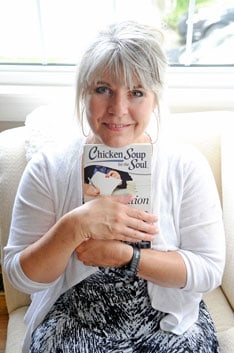Advanced divers experienced what it’s like to descend 180 feet under water, without ever having to get wet, as they gathered at David Reimer’s hyperbaric chamber in Elmira on November 29.
![Advanced divers from the Etobicoke Underwater Club used David Reimer’s hyperbaric chamber in Elmira last weekend to simulate a deepwater dive.[Whitney Neilson / The Observer]](https://www.observerxtra.com/content/images/wp-content/uploads/2014/12/post_news_diving.jpg)
Diving instructor Art Penney and his advanced diving students at the Etobicoke Underwater Club used Reimer’s chamber to simulate the effects of going deep underwater where the pressure is seven times greater than at the surface.
Going that deep can have some interesting effects, including what’s known as nitrogen narcosis (narced, in diver parlance), which can cause symptoms similar to intoxication as the nitrogen in your system is put under pressure.
“What happens is, the nitrogen that’s in your body – right now it doesn’t become toxic – but it becomes … it’s like alcohol, you get drunk,” Penney said prior to starting. “They’re going to be funny as anything.”
He explained that participants’ voices get “squished” and all of a sudden everyone starts sounding like Mickey Mouse.
Reimer noted people who can’t handle their booze aren’t able to do deep dives.
“Every 33 feet you go down is like you drinking one martini,” Reimer said. “So how good does your brain work after you’ve had about seven martinis?”
Penney recalls a couple years ago when they did the same exercise. One of the divers picked up the phone in the chamber to talk to Penney, who was outside of it.
“Two things went wrong. One thing, the phone wasn’t working but he was talking to me. And the second thing was he started to speak Dutch,” Penney laughed.
Marianne Collins dives with the club and says using this type of chamber is the safest way for divers to experience a deep dive so they know what to expect when doing it for real.
“The nice thing as a diver is we get to know and accept our limits,” Collins said. We have one of our divers that gets narced at 60 feet. She knows what level she needs to be worried about.”
Penney added the whole idea of the exercise is to show them what happens to their bodies at different depths. The divers were given different tasks to complete before entering the chamber, so they could compare how they did while at a different depth. They included tasks like writing your name with your dominant and non-dominant hand, and using pliers to drop pop-can tabs into a slot.
“It’s all to simulate a really, really deep dive,” Penney said. “We would not go this deep normally.”
The divers weren’t able to take cameras, watches, or even pens in the chamber because they would explode under the pressure. They were told to wear a t-shirt and a sweatshirt because as they get compressed the temperature will rise, but when they’re returning to atmospheric pressure they’ll become cold.
Penney says he thinks this is the closest chamber for their club. Toronto General Hospital has one but they only use it for medical purposes. While Reimer’s main business is medical, he also makes it available for other uses.
Hyperbaric chambers can be used to treat non-healing wounds, especially those experienced by diabetics, for instance –
“They get ulcers in their feet and it’s not good,” Penney said. “This stuff what it does, they can put oxygen in here. The oxygen is also on the wound. Not only does the oxygen cut through your respiratory system, it’s there and it’s being forced into the tissues. They cure all kinds of people.”
Reimer, a diver himself, started his business in Hamilton but moved to Elmira, partly because he was curious about his Mennonite history. He originally operated beside the library, but didn’t have enough room. Now he works out of a space on Howard Avenue. He moved to that location in 2011.
Diver Beatrice Augereau said the class is lucky to have access to the chamber.
“It’s not easy to have the opportunity to do this kind of exercise,” Augereau said. “For example, the scuba diving club where I was in France it was hard to find a place. It’s not easy.”
The chamber also helped a diver discover she had an undiagnosed medical condition. Penney said she had been in the Caribbean for years and breathed nitrox, a higher level of oxygen. She couldn’t get the nitrox at one point and dove to 70 feet, which is still safe to do on air.
She felt itchy after the dive and called the Diving Alert Network, which takes care of diving accidents. They didn’t think anything was wrong with her so she called Penney.
“She came here, she got to 180 feet, she was fine,” Penney said. “We started to come up and all of a sudden away she goes. We grabbed some oxygen, said ‘breathe this.’ She started to feel better, well that’s an indicator, which means she was bent (decompression sickness).”
They went to see a diving doctor in Toronto and it turns out she had a hole in her heart. What was happening was the air was going through it and she got bent. They fixed the hole and two months later she was diving. They said they would never have found this if she hadn’t been a diver.
“Apparently a lot of people have it and don’t know it,” Collins said. “You never know until you go into this kind of situation.”
Penney has been diving since 1956 and teaching diving since 1979.
EUC has the best safety record of any diving club in North America, part of which can be attributed to their use of this chamber, he said.
“All this is to show them what they should and shouldn’t do in a safe environment.”









